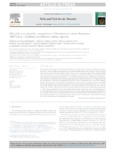Por favor, use este identificador para citar o enlazar este ítem:
http://www.alice.cnptia.embrapa.br/alice/handle/doc/1065791Registro completo de metadatos
| Campo DC | Valor | Lengua/Idioma |
|---|---|---|
| dc.contributor.author | RODRIGUES, V. da S. | pt_BR |
| dc.contributor.author | GARCIA, M. V. | pt_BR |
| dc.contributor.author | CRUZ, B. C. | pt_BR |
| dc.contributor.author | MACIEL, W. G. | pt_BR |
| dc.contributor.author | ZIMMERMANN, N. P. | pt_BR |
| dc.contributor.author | KOLLER, W. W. | pt_BR |
| dc.contributor.author | BARROS, J. C. | pt_BR |
| dc.contributor.author | ANDREOTTI, R. | pt_BR |
| dc.date.accessioned | 2017-03-02T11:11:11Z | pt_BR |
| dc.date.available | 2017-03-02T11:11:11Z | pt_BR |
| dc.date.created | 2017-03-02 | pt_BR |
| dc.date.issued | 2017 | pt_BR |
| dc.identifier.citation | Ticks and tick-borne disease, v. 8, n. 3, p. 379-384, March, 2017 | pt_BR |
| dc.identifier.uri | http://www.alice.cnptia.embrapa.br/alice/handle/doc/1065791 | pt_BR |
| dc.description | The objective of this study was to evaluate the life cycle and parasitic competence of Dermacentor nitens(Neumann, 1897) on different animal species. Experimental infestations were induced in five specimenseach of seven species of possible hosts: rabbits, horses, sheep, cows, guinea pigs, birds and dogs. Rabbitswere infested in the ear using artificial feeding chambers, and the horses, sheep, cows and dogs wereinfested in the ear without feeding chambers. For the infestation of guinea pigs, artificial feeding chamberswere fixed on the back. Birds were infested by placing larvae on the back and under the wings without theuse of chambers. All animals were inspected daily until the end of the parasitic phase (when the engorgedfemales detached). The average period of engorgement was 25.1 days on a horse, with larvae requiring8 days and nymphs 9 days to reach engorgement; the average weight of engorged females was 271.4 mg;the average weight of egg batches produced was 159.3 mg, and the feed conversion rate was 56.8%. Onrabbits, the average engorgement period was 27.6 days, larvae and nymphs reached engorgement after7.4 and 11 days, respectively, the average weight of an engorged female was 108.4 mg and the egg masswas 30.6 mg. The feed conversion rate on rabbits was 30%. Cows, sheep, guinea pigs, dogs and birds werenot competent hosts, since no engorged females were recovered. Rabbits, when artificially infested, canbe used as an alternative host for the maintenance of these ticks in the laboratory. The parasitic specificityof D. nitens for horses was demonstrated in this study. | pt_BR |
| dc.language.iso | eng | eng |
| dc.rights | openAccess | eng |
| dc.subject | Artificial infestation | pt_BR |
| dc.title | Life cycle and parasitic competence of Dermacentor nitens Neumann, 1897 (Acari: ixodidae) on different animal species. | pt_BR |
| dc.type | Artigo de periódico | pt_BR |
| dc.date.updated | 2017-03-29T11:11:11Z | pt_BR |
| dc.subject.thesagro | Anocentor Nitens | pt_BR |
| dc.subject.nalthesaurus | Hosts | pt_BR |
| dc.subject.nalthesaurus | Ticks | pt_BR |
| riaa.ainfo.id | 1065791 | pt_BR |
| riaa.ainfo.lastupdate | 2017-03-29 | pt_BR |
| dc.contributor.institution | VINICIUS DA SILVA RODRIGUES, UFMS; MARCOS VALÉRIO GARCIA; BRENO CAYEIRO CRUZ, UNESP; WILLIAN GIQUELIN MACIEL, UNESP; NAMOR PINHEIRO ZIMMERMANN; WILSON WERNER KOLLER, CNPGC; JACQUELINE CAVALCANTE BARROS, CNPGC; RENATO ANDREOTTI E SILVA, CNPGC. | pt_BR |
| Aparece en las colecciones: | Artigo em periódico indexado (CNPGC)  | |
Ficheros en este ítem:
| Fichero | Descripción | Tamaño | Formato | |
|---|---|---|---|---|
| Lifecycleandparasiticcompetenceofdermacentor.pdf | 819,67 kB | Adobe PDF |  Visualizar/Abrir |









